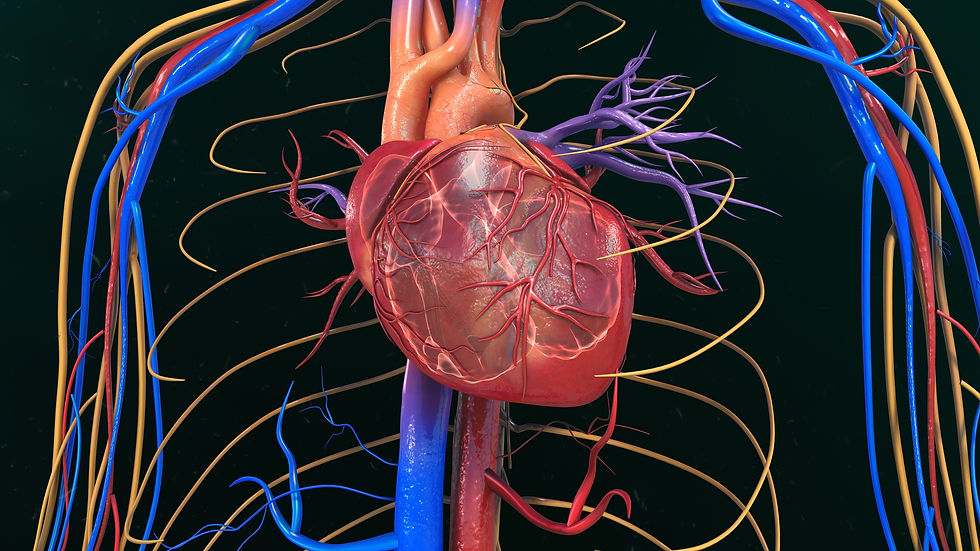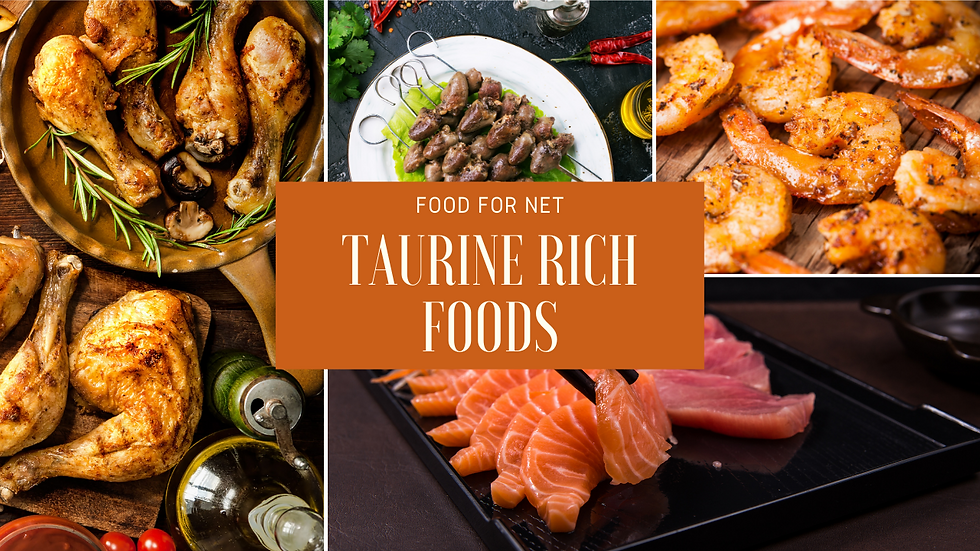Beyond Blood-Thinners: Understanding AFIB & AFIB Natural Support
- Rebecca Montrone
- Sep 28
- 4 min read

Intro
Atrial fibrillation (AFIB) is common, serious, and often managed with medications and procedures. Is developing AFIB inevitable as we age, or simply the "luck of the draw?" I say, "NO! " This companion guide explains what sets the stage for AFIB—and how nutrition and lifestyle can help support a steadier heartbeat. Interestingly, the same approaches that keep our tickers healthy embody the same principles that keep the rest of us healthy; the Wondrous Foundational Roots of Health!
On this page
AFIB in a nutshell
Why the heart’s “terrain” matters
Nutritional foundations for rhythm stability
AFIB/Omega-3 confusion—cleared up
Plasmalogens (a new frontier of understanding)
Lifestyle that lightens the AFIB load
Putting it together
Resources - video, downloadble slides, etc.
Education note
AFIB in a nutshell

What it is. Chaotic electrical activity in the atria. Instead of contracting, the atria “quiver,” which can allow blood to pool and clot.
How common. Risk rises with age; many cases are “silent.”
Associated factors. Hypertension, coronary disease, heart failure, diabetes, obesity, sleep apnea; thyroid imbalance; alcohol (“holiday heart”), high caffeine, low electrolytes, stress.

Why the heart’s “terrain” matters
Stable rhythm depends on:
Healthy membranes for clean electrical signaling
Robust mitochondria for steady ATP
Balanced thyroid function (iodine + selenium sufficiency)
Electrolytes (magnesium, potassium)
Antioxidant protection (glutathione)
When these drift, atrial cells become more “twitchy.”
Nutritional foundations for rhythm stability - AFIB Natural Support

Iodine + Selenium: rhythm through thyroid balance
Iodine supports optimal thyroid hormone production—vital for heart rate, vascular tone, and lipid handling. Selenium partners with iodine to protect tissues from oxidative stress, support hormone activation/deactivation, and help bind certain toxic metals.
Key: Adequate iodine with selenium supports smoother, steadier rhythm.

Glutathione: the heart’s antioxidant shield
AFIB is linked to oxidative stress in atrial cells and mitochondria. Glutathione protects those cells, preserves ion-channel integrity, and supports efficient ATP output. Glutathione adequacy is KEY to AFIB natural support.

CoQ10 + L-Carnitine: fuel for cardiac mitochondria
CoQ10 (ubiquinol preferred): central to electron transport; often reduced by statins.
L-Carnitine/Acetyl-L-Carnitine: shuttles fatty acids into mitochondria for energy.
Together they support fuel delivery and ATP—foundations for a resilient heartbeat.

Taurine: the calm conductor
A sulfur-containing amino acid concentrated in heart tissue. Taurine helps regulate calcium flow in heart cells and shows anti-arrhythmic effects in research. Many people do well in the 1,500–3,000 mg/day range (divided).

Magnesium & Potassium: the quiet heroes
Magnesium tempers excitability and prevents calcium overload. Choose glycinate, malate, citrate, or taurate.
Potassium sets the electrical gradient that triggers each beat. Emphasize food sources first (produce, beans, yogurt/fish).
Note: Always consider kidney function and medications before supplementing potassium.

Omega-3 (& AFIB confusion—cleared up)
Omega-3s (EPA/DHA) have well-known benefits: membrane fluidity, lower triglycerides, improved endothelial function, and protection against sudden cardiac death. Those benefits are real. Newer data add nuance:
In some large studies of high-risk cardiac patients, very high supplemental doses—especially EPA-only products at multi-gram levels—were associated with an increased likelihood of AFIB.
Benefits still appeared in parallel (e.g., triglyceride lowering). The lesson is not “omega-3s are bad,” but that dose, form, and context matter.
Practical guidance
Food first: 2–3 servings/week of cold-water fish fits many people well.
Moderate supplemental range: ~1–2 g/day combined EPA+DHA (total from food + supplement).
Use extra caution with EPA-only products and >3 g/day dosing in those with existing AFIB or very high risk—work with your clinician and monitor.
Bottom line: Omega-3s remain valuable for heart health; match dose and form to the person and purpose.

Plasmalogens (a new frontier of understanding)
Plasmalogens are specialized phospholipids concentrated in heart and brain membranes. They stabilize signaling surfaces, buffer oxidative stress, and support mitochondrial efficiency.
DHA-rich plasmalogen precursors are designed to rebuild these structural lipids inside membranes. That’s different from standard fish oil, which primarily circulates in the bloodstream to deliver bulk EPA/DHA and lower triglycerides.
In plain terms:
Fish oil ≈ bloodstream support (triglycerides, inflammation)
Plasmalogen precursors ≈ membrane rebuilding (structure + signaling)
Plasmalogens are relatively new to my "wonders of health" vocabulary. For lots more exciting info, see my page here: Plasmalogens | Wondrous Roots

Lifestyle that lightens the AFIB load
Diet: Whole-food focus; keep refined sugar low (glycation stiffens tissues, including atria).
Exercise: Consistent and moderate; extreme endurance can raise AFIB risk in some.
Alcohol: Easy does it—“holiday heart” is real.
Sleep: Screen for and treat sleep apnea.
Stress & Vagal tone: Breathwork, HRV-minded practices, prayer/meditation, acupuncture.

Putting it together
Iodine + Selenium (balanced together)
Glutathione support (e.g., S-acetyl glutathione)
CoQ10 (ubiquinol) + L-Carnitine
Taurine
Magnesium (well-absorbed forms) ± dietary potassium emphasis
Omega-3s in moderate ranges (with context above)
Lifestyle pillars (sleep, stress, steady movement, lower sugar, mindful alcohol)
To Explore More Deeply!

Got Questions about cholesterol and other hot cardio topics?
For more on your Ticker Health, go here: Heart Health/Cardiovascular | Wondrous Roots
Education note
This article is educational and not medical advice. Always coordinate with your healthcare team—especially if you use antiarrhythmics, anticoagulants, blood-pressure meds, diuretics, or thyroid medications.

